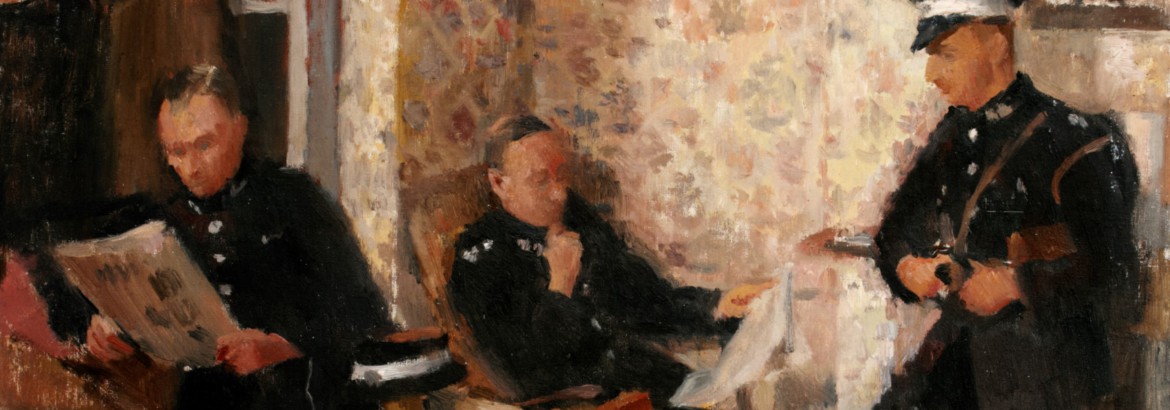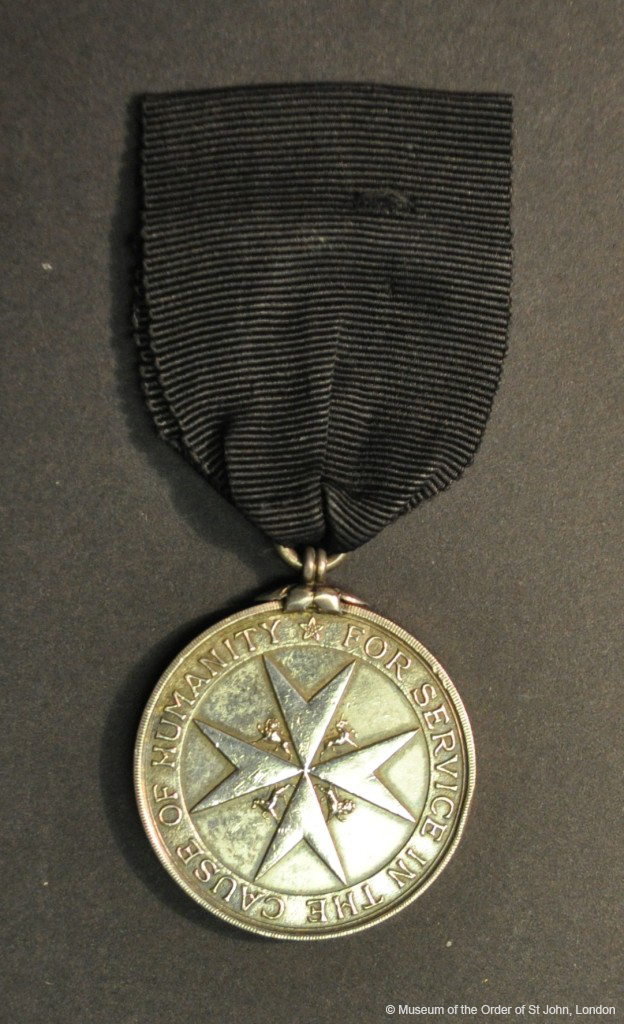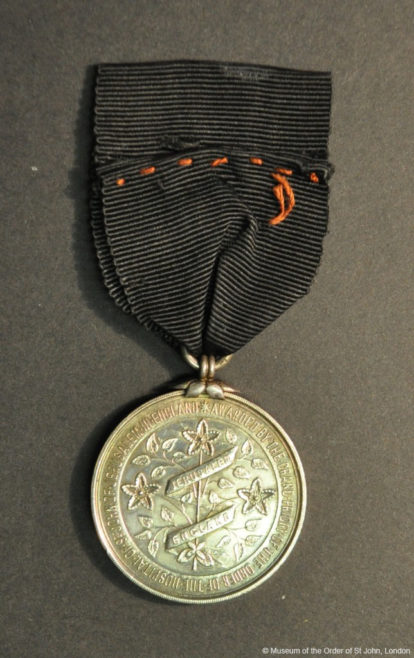Edwin Ralphs, the Assistant Commissioner of the St John Ambulance Brigade in Hong Kong, directed the rescue effort of a team of 80 Brigade members over the course of nine days, following a fierce storm in Po Hing Fong in July 1925. As a result of the storm five large houses collapsed, and 95 people were buried in the ruins. Working day and night, the team were able to save 20 people, and retrieve the bodies of the 75 who had not survived the disaster.
At the time of the institution of this medal in 1874, there was no state or national award available for bravery or lifesaving of civilians on land. In particular, for rescues in mines, quarries, factories and industry in general there was no public or private body to which application for recognition could be made. The Chapter General of the Order of St John identified this gap in the range of awards available, and sought to introduce an appropriate award.
The first presentation of the Order’s Life Saving Medal were to two colliers, Elijah Hallam and Frederick Vickers. On the 6th September 1875, at imminent risk of their own lives, they saved six of their fellow workmen, who were suspended in a broken cage half-way down the shaft of a coal pit.
Initially awarded in either bronze or silver, dependent on the level of danger encountered in the attempt to save life, in 1907 a gold version was also authorised. In 1963 a bar, to be worn on the ribbon of the medal, was instituted to recognise further acts by the same individual.
The front of the medal has a central eight-pointed cross, with unicorn and lion supporters, added to the Order’s emblem following the Royal Charter of 1888 which made the Order one of chivalry. The reverse of the medal features St John’s Wort, a medicinal herb used by the Hospitallers in the Order’s earliest hospitals from the 12th century. The appearance of the medal has changed little since its inception, although the ribbon has changed. This Life Saving Medal has the second type of ribbon, which is plain black.




